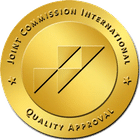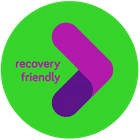Opiate Addiction: GateHouse Treatment has helped hundreds of clients from all walks of life fight dependency. For example, we understand first-hand that opiate addiction happens to more than the stereotypical partier who is recklessly using and abusing illegal street drugs. It often happens by accident. And it often surprises people who are going through a difficult time. Regular, everyday people get caught unaware in the web of prescription opiate medications every day. But how?
The rate of opiate addiction and death has quickly skyrocketed and is getting out of hand with each year that goes by. According to the Centers for Disease Control and Prevention (CDC), overdose deaths remain a leading cause of injury-related death in the U.S., and it has worsened since the pandemic. More than 46 people throughout the United States are dying PER DAY from opiate overdoses. That is primarily the result of prescribed medications. The statistics are alarming, but the problem did not get out of hand overnight.
How Opiate Addiction Happens
To start, we should explore the origins of opiates, if only to recognize that it has a history filled with good intentions.
An opiate is a prescription drug derived from opium (or has opium in them), used to treat pain or even sleep disorders. Initially introduced as an analgesic agent (or pain reliever), their uses include everything from anesthesia to diarrhea suppression. The most common examples of opiates include codeine, morphine, and heroin.
The first wave of opiate prescriptions for pain relief came in the early 90s. Since then, opiate addiction has often resulted from a person starting with a legitimate prescription for needed medication.
For decades, patients have been prescribed opiate medication after experiencing a significant medical issue. Their body begins to tolerate the medication the longer they take it. As time goes on, they need a larger dose of the medication to achieve the same pain-reducing effect. Of course, they take more, and over time, they become physically and psychologically addicted. People who suffer from severe pain and pain over more extended periods are at a greater risk because they take pain medication for longer.
When patients try to stop taking opiate medications, they may have trouble because they can experience painful withdrawal symptoms. That also makes it more difficult to discontinue use and can contribute to addiction.
Another unintended result of opiate use for pain reduction, which can contribute to addiction, is the mind-based effects of the medications. Opiates can cause the person taking them to experience a sense of euphoria. People who take opiates over time may not just take them to reduce physical pain but also to achieve that sense of euphoria. They equate euphoria with pain reduction, so even after they have healed from their medical requirement, they have a physical need to have their senses dulled.
Groups at Risk of Drug Abuse and Addiction
Specific demographics are more likely than others to become addicted to opiate medications. However, the problem has cut across many ages, incomes, occupations and racial groups among men and women. One of the groups most at risk is workers in the construction industry.
There are many factors contributing to that problem. Working in that industry is physically rigorous and can lead to injuries and pain. Workers in their 40s or older may recover more slowly from those types of physical problems, thus causing them to turn to medications that can ease their pain. But, when people are being affected by those medications while on the job, there are increased safety risks to themselves and others, such as their coworkers.
Employees in transportation are also heavily affected, which has resulted in the DOT changing its drug testing regulations to combat the problem.
The fact is anyone can access this medication virtually anywhere. There is no smoking or needles required. No matter the profession (teaching, law enforcement, professional sports, cashiers, etc.), opiates are easy to ingest without bringing unwanted attention.
6 Alarming Opiate Abuse Stats
The CDC has been keeping statistics on opiate use and abuse, and the numbers are truly alarming:
- 46+ people die each day from prescription opiate overdoses
- In 2014, more than 2 million people in the United States were abusing or addicted to prescription opiates
- More than 180,000 people died because of opiate use between 1999 to 2015
- In 2016, the highest death rates from opiate overdose occurred in people who were between 25 to 54 years old
- Overdoses involving opioids killed nearly 69,000 people in 2020
- Almost 75% of drug overdose deaths in 2020 involved an opioid
Opiate prescription abuse and overdose is a problem that is not going away on their own. It requires serious and immediate action, including initiatives that connect people addicted to opiates to professional treatment and recovery.
Professional Treatment for Recovery
It is imperative for people who become addicted to opiate medications to seek professional treatment to assist with their recovery.
Recovering from prescription drug addiction can be complex and challenging, so having a professional lead is critical. Treatment should be customized to the person’s needs and typically involves a variety of approaches, such as behavioral therapies, education, counseling, nutritional support, and exercise.
GateHouse Treatment: Solutions for Opiate Addiction and Abuse
As a result of the widespread use of prescription opiate medications and the severe risks that abuse poses, many employers have implemented comprehensive drug-free workplace policies, which include random, post-accident, and reasonable suspicion drug testing.
Tragically, prescription opiate use, abuse, and addiction have rapidly gotten out of control. But, by helping people struggling with opiate addiction to get into professional treatment rather than trying to handle it on their own and by employers incorporating comprehensive drug testing policies to prevent or reduce abuse, we can make workplaces and society safer, healthier, happier, and more productive for everyone.
At GateHouse Treatment, we see opiate addiction as a problem that requires patience rather than judgment. Our team of highly trained and compassionate experts puts every care into ensuring the wellness of those who seek solutions. We have sober homes, partial hospitalization, outpatient programs, medication-assisted treatment, and other innovative forms of therapy that form a holistic plan toward sobriety.
If you or a loved one are struggling with a prescription or opiate use, we can help! Here at GateHouse, we are available to you 24/7. Contact us or call us at (855) 448-3588.
- Cymbalta Withdrawal: Causes, Symptoms, And Management - October 12, 2023
- Boredom in Recovery: 5 Tips to Avoid Relapse - October 6, 2023
- Overconfidence and Rehab: Avoiding Relapse - October 4, 2023




